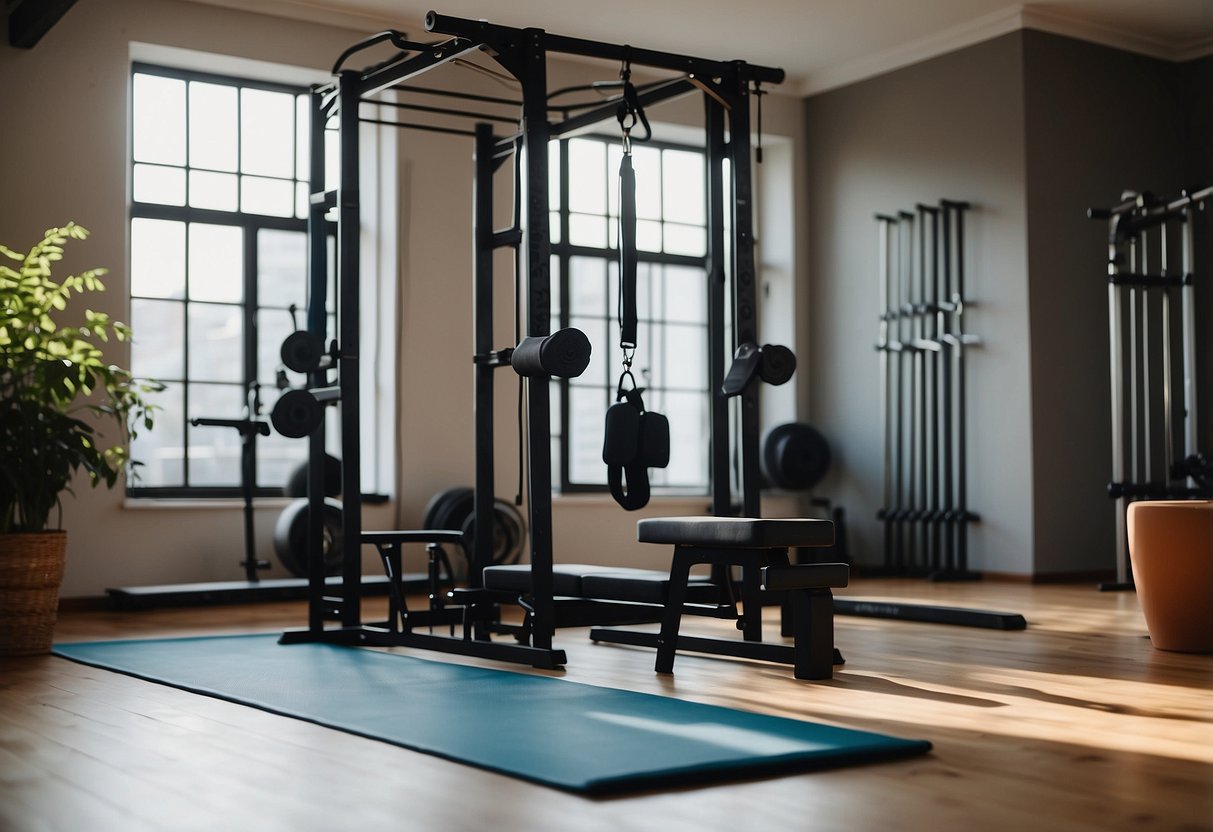
Creating an Effective Home Workout Routine
Crafting a home workout routine requires understanding fundamental principles like workout structure and progression to achieve optimal results. Consistency and smart planning play key roles in building a sustainable and effective exercise regimen.
Structuring Your Workout
Begin by setting specific goals, whether it’s gaining strength, building muscle, or enhancing endurance. Structure each workout with a warm-up to prepare muscles and prevent injuries.
Include a balanced mix of upper body, lower body, and core exercises. This ensures comprehensive muscle engagement. Allocate 20-30 minutes for your workout, focusing intensely on form and technique.
Rest intervals should be kept short, around 30-60 seconds, to maintain intensity. Incorporate cooldown routines such as stretching to enhance flexibility and aid recovery.
Progression and Scaling
Progression is key to continued improvement. Start with exercises that match your current fitness level and gradually increase difficulty. This can involve adding more reps, sets, or switching to advanced variations of each exercise.
Tracking progress helps reveal areas needing attention and keeps motivation high. Use a journal or app to log workouts, noting any changes in performance.
If an exercise becomes too easy, scale it by adding resistance or modifying its form. For instance, transitioning from knee push-ups to full push-ups can add intensity. Monitoring how the body responds to these adjustments is crucial to avoid overtraining while maximizing benefits.
Key Tips for Maximizing Strength Gains
Maximizing strength gains requires focus on proper form and consistent practice. Attention to these details can significantly improve performance and prevent injuries.
Proper Form and Technique
Using correct form and technique is crucial for effective and safe workouts. Each exercise should be performed with precision to ensure that the targeted muscle groups are engaged properly. Poor form can lead to imbalanced muscle development and increased risk of injury.
Start each exercise by watching a demonstration video or consulting a reliable source for instructions. Pay close attention to the alignment of your body and the movement patterns involved.
Keeping your core engaged and maintaining a neutral spine is important. This helps in distributing the workload evenly across the muscles and reduces unnecessary strain on the joints.
Breathing also plays a key role. Inhale during the easier part of the movement and exhale during the more difficult phase. This can help stabilize the body and provide the muscles with the oxygen they need.
Consistent Practice
Consistency is key in building strength. Establish a regular workout routine and stick to it. Aim to exercise at least three times a week, allowing for rest days to enable muscle recovery.
Keeping track of your workouts can help maintain consistency. Use a workout journal or an app to monitor your progress and stay motivated.
Varying your routine can prevent plateaus. Mix different exercises to target various muscle groups and keep your sessions engaging. This also ensures that no muscle group is neglected.
Scheduling your workouts at a specific time each day helps in forming a habit. Consistent practice builds not only physical strength but also mental resilience and discipline.



